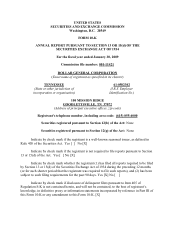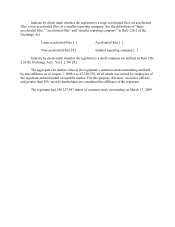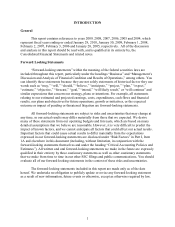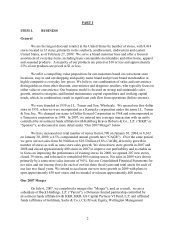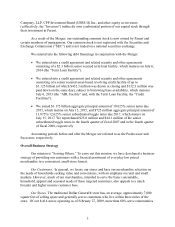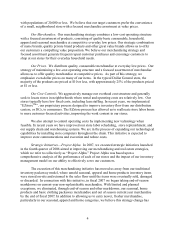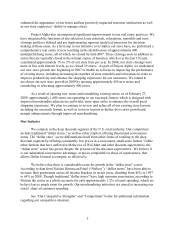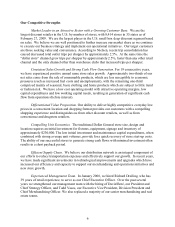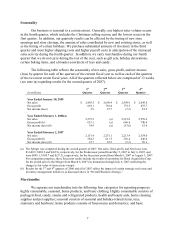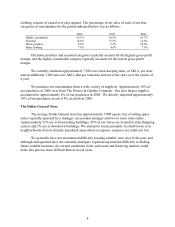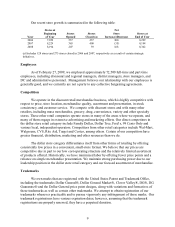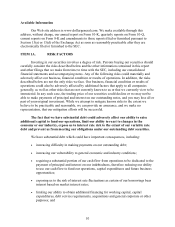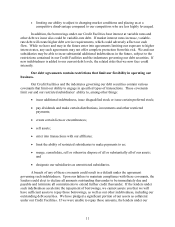Dollar General 2008 Annual Report Download - page 6
Download and view the complete annual report
Please find page 6 of the 2008 Dollar General annual report below. You can navigate through the pages in the report by either clicking on the pages listed below, or by using the keyword search tool below to find specific information within the annual report.4
with populations of 20,000 or less. We believe that our target customers prefer the convenience
of a small, neighborhood store with a focused merchandise assortment at value prices.
Our Merchandise. Our merchandising strategy combines a low-cost operating structure
with a focused assortment of products, consisting of quality basic consumable, household,
apparel and seasonal merchandise at competitive everyday low prices. Our strategic combination
of name brands, quality private brand products and other great value brands allows us to offer
our customers a compelling value proposition. We believe our merchandising strategy and
focused assortment generate frequent repeat customer purchases and encourage customers to
shop at our stores for their everyday household needs.
Our Prices. We distribute quality, consumable merchandise at everyday low prices. Our
strategy of maintaining a low-cost operating structure and a focused assortment of merchandise
allows us to offer quality merchandise at competitive prices. As part of this strategy, we
emphasize even-dollar prices on many of our items. In the typical Dollar General store, the
majority of the products are priced at $10 or less, with approximately 25% of the products priced
at $1 or less.
Our Cost Controls. We aggressively manage our overhead cost structure and generally
seek to locate stores in neighborhoods where rental and operating costs are relatively low. Our
stores typically have low fixed costs, including lean staffing. In recent years, we implemented
“EZstoreTM”, our proprietary process designed to improve inventory flow from our distribution
centers, or DCs, to consumers. The EZstore process has allowed us to reallocate store labor hours
to more customer-focused activities, improving the work content in our stores.
We also attempt to control operating costs by implementing new technology when
feasible. In recent years we have improved our store labor scheduling, store replenishment, and
our supply chain and warehousing systems. We are in the process of expanding our technological
capabilities by installing store computers throughout the chain. This initiative is expected to
improve store communications and execution and reduce costs.
Strategic Initiatives—Project Alpha. In 2007, we executed strategic initiatives launched
in the fourth quarter of 2006 aimed at improving our merchandising and real estate strategies,
which we refer to collectively as “Project Alpha.” Project Alpha was based upon a
comprehensive analysis of the performance of each of our stores and the impact of our inventory
management model on our ability to effectively serve our customers.
The execution of this merchandising initiative has moved us away from our traditional
inventory packaway model, where unsold seasonal, apparel and home products inventory items
were stored on-site and returned to the sales floor until the items were eventually sold, damaged
or discarded. In connection with this initiative, in fiscal 2007 we began taking end-of-season
markdowns on current-year non-replenishable merchandise. With limited and planned
exceptions, we eliminated, through end-of-season and other markdowns, our seasonal, home
products and basic clothing packaway merchandise and out of season current year merchandise
by the end of fiscal 2007. In addition to allowing us to carry newer, fresher merchandise,
particularly in our seasonal, apparel and home categories, we believe this strategy change has

